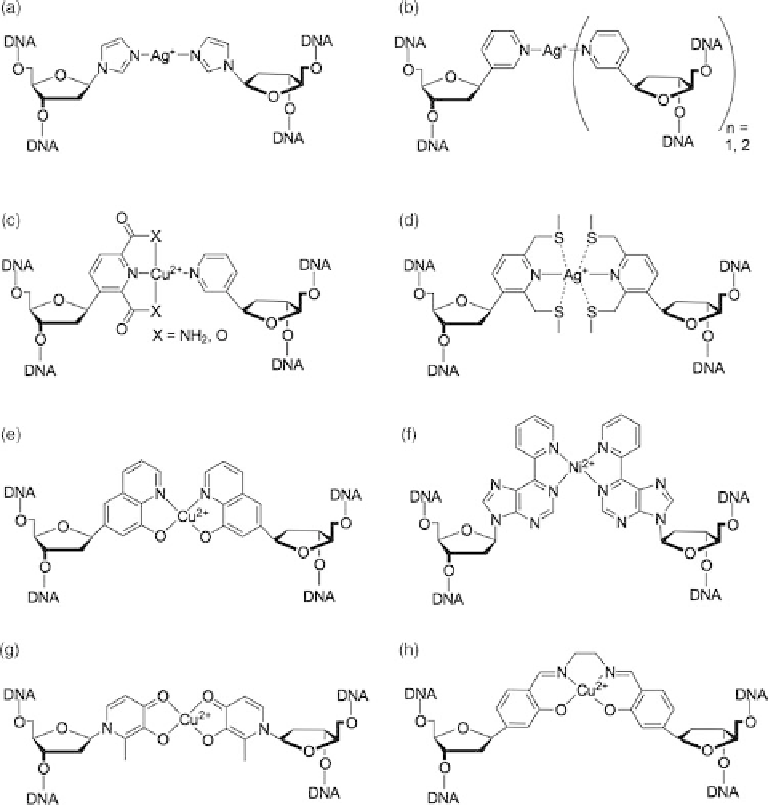Chemistry Reference
In-Depth Information
Figure 9.10 Overview of a selection of metal base pairs.
Ag(I) ions in DNA duplexes. Depending on the sequence design, the latter ligand was
even able to form metal-mediated triple helices containing trigonal-planar coordinated
Ag(I). The asymmetric base pair based on pyridine-2,6-dicarboxylate (or derivatives) and
pyridine (Figure 9.10c) was already discussed in Section 9.4.3. A symmetric variant con-
taining soft sulfur atoms as coordinating atoms with the ability to coordinate Ag(I) is
shown in Figure 9.10d [44]. Figure 9.10e shows a Cu(II)-mediated base pair based on the
hydroxyquinoline ligand [45], whereas Figure 9.10f shows a nice example of a ligand
system based upon the natural purine base adenine from which it can be synthesized in a
few steps [46]. Figure 9.10g and h depict the hydroxypyridone and the salen metal base
pairs which will be discussed in more detail below.

Search WWH ::

Custom Search